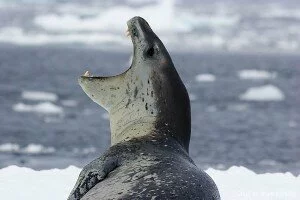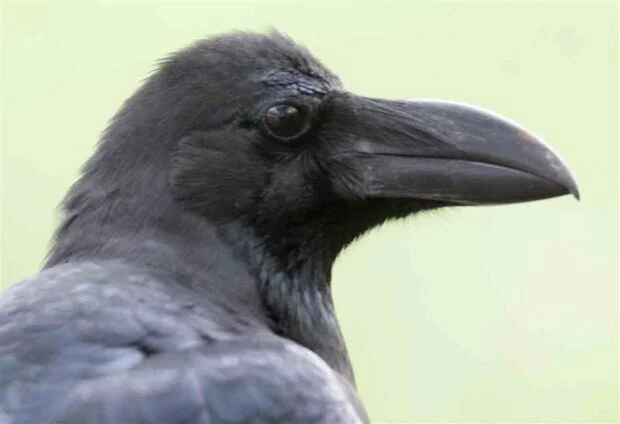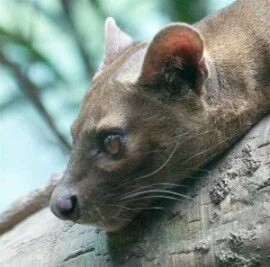The Leopard Seals of the Antarctic
In the frigid Antarctic Ocean, a group of emperor penguins is returning to dry land after a much needed hunt for food. The weather is unforgiving and the waters are dark in color, obscuring any view of its contents deep within. As the group begins to near shore, they are oblivious to the presence of another creature within their vicinity, a creature which has also been searching for food. Lurking below the icy water’s surface, the obscured animal prepares itself for the incoming raft of penguins. As the graceful marine birds, eager to join the rest of their colony back on land, approach the frozen shores, an discomforting sensation begins to generate in their minds, as if they are being watched. Suddenly, a great force violently smashes into one of the birds, momentarily disorientating the shocked and confused victim. The water erupts upward in the spur of the moment, and the frightened group quickly manages to regain its focus and attempts to reach the shore mere seconds away from them. Upon reaching their safe haven, the penguins leap out of the water with all their might and land onto the ice-ridden. The groups’ members turn their heads to the water’s edge, surprised to find that the injured penguin also managed to reach the shore along with them. Injured yet clearly alive, the stricken penguin struggles its way onto land and attempts to return to its colony. However, the hidden marine predator is not one to surrender the hunt so easily. Behind the maimed penguin, the pursuer launches itself from the frigid depths with the intent of finishing what it started. As the water dissipates in the air, the relentless hunter’s image is finally seen. Neither a shark nor an orca, the mighty predator is none other than the formidable leopard seal, one of the mightiest predators in the Antarctic waters. The leopard seal immediately locates the crippled penguin it attacked before, and lunges towards it. The seal opens its powerful jaws, revealing its fierce set of teeth, designed perfectly for its predatory lifestyle, and seizes its prey. With a mighty turn of its body, the large mammal rushes back into the cold waters with its prize. The remaining penguins further themselves from the shore in order to avoid a second attack from their powerful foe. Back in the water, the leopard seal resurfaces with its quarry still in its jaws, crushed by the strength of the predator’s bite. The seal then powerfully swings its head, causing deep lacerations in the penguin carcass before finally ripping the body into two large portions. The retreating penguins have no interest in observing this violent behavior, as they are well acquainted with their overwhelming predator. They must endure the ever-threatening presence of this dominant predator as they continue to struggle for survival in this harsh, unforgiving environment, the hunting ground of the mighty leopard seal.
Second only to elephant seals,[1] leopard seals (Hydrurga leptonyx) are among the largest seals on earth, reaching lengths of up to 11.5 feet and weighing as much as 840 lbs.[2] On average, females of the species are slightly larger than males.[3]These impressive animals possess massive, streamlined bodies with very large heads and long, broad foreflippers. Unlike most other seals, which propel themselves through the water via side-to-side strokes of the hindlimbs, leopard seals use simultaneous strokes of their forelimbs in order to swim. The upper side of their bodies possess a dark coloration, while their sides and lower sections have a silvery pale coloration along with varying degrees of spotting (hence the species’ common name). The leopard seal’s canines are well developed and intimidating, while the cheek teeth possess tubercles or lobes which allow the seals to filter krill from the water.[4]This dentition allows these seals to prey on a decent variety of animals.
Leopard seals are most commonly observed in the polar and subpolar waters of the Southern Hemisphere, along Antarctica’s coast as well as on most sub-Antarctic islands. However, leopard seals are by no means limited to these areas. In fact, the species has been observed in other nearby locations, including South Africa, southern Australia, Tasmania, New Zealand, Lord Howe Island, the Cook Islands, Tierra del Fuego, and South America’s Atlantic coast. The leopard seal’s main habitats along its more common range are the frigid Antarctic and sub-Antarctic waters. Within this range, the seals often haul out on the outer edges of pack ice in order to rest.[5]Determining the population numbers of this species is not exactly an easy task for scientists, considering the large and inhospitable environment these animals inhabit. However, an estimation of a population size of 220,000-440,000 has been made.[6]
Leopard seals are nowhere near as social as their relatives. Groups formed by these seals tend to be rather small, and it is not uncommon to observe individuals living with only one or two companions, or none at all.[7] Seals of different age groups are commonly segregated in different areas, with mature animals occurring on the outer fringes of pack ice and younger animals dispersing to sub-Antarctic islands during the winter. It is not clear yet whether these movements are migrations or periodic dispersals due to intraspecific competition.[8] Since the leopard seal is considered the most aggressive species of seal, [9]it is likely that this movement behavior is the result of competition among seals of different sizes. After all, it would be within the younger seals’ best interests to avoid interacting with the much larger and more powerful adults of their species. Despite this relatively solitary lifestyle compared to other seals, leopard seals do seem to communicate with each other. They are capable of producing a variety of vocalizations, which have been correlated with different body movements and postures. These vocalizations have been associated with aggressive messages, female receptivity, and males searching for potential mates.[10]
Leopard seals are extraordinary hunters and dominant predators, as well as the only seal known to attack and consume other seal species. They may be sluggish on land, but they can prove to be successful terrestrial predators on occasions. This is due to the fact that their largest prey, penguins and other seals, are not very agile on land either. As a result, leopard seals can attempt to hunt out of the water when the need arises. Should a leopard seal manage to reach an animal on land, it will carry out a rather disturbing style of killing behavior. The leopard seal will clamp its jaws around the feet of its prey and then proceed to violently thrash them back and forth against the ground until the victim dies.[11] It may seem brutal to some, but it is an effective killing method. Nonetheless, the leopard seal is a far more effective predator in the water. It will often wait near an ice shelf while submerged underwater, attacking its prey just as it enters the water after jumping off the ice. These seals are also known to attack seabirds resting on the water’s surface, snatching their unsuspecting prey in their strong jaws.[12]They display equally violent feeding behavior in the water, often tearing apart large prey such as seals into more easily consumed portions. Due to their size and great strength, leopard seals can enjoy choosing from a wide variety of prey. Krill makes up a large portion of their diet at an estimated 45%, while other seals, particularly crabeater seals, make up about 30% of the leopard seal’s diet. Penguins are also taken, forming 10% of the diet, while fish and cephalopods make up another 10% estimate. It should be noted, however, that these estimates vary according to the seals’ age and also the availability of prey from one area to another. Leopard seals are also known to scavenge on whale and seal carrion whenever they are presented with the opportunity. Although these animals can dive for up to 15 minutes, they often do not need to do so, as the warm-blooded animals which constitute much of their diet can often be found near the surface of the water.[13] All in all, leopard seals enjoy a much higher place in the food chain than their smaller relatives, and are thus capable of preying on a wider variety of animals.
As leopard seals are powerful predators which reach large sizes, they are dominant animals which are generally free from predators. However, there do exist animals which can occasionally prey on leopard seals. Among these is the massive orca, which is capable of overpowering the much smaller leopard seal. Furthermore, large species of sharks may also prey on leopard seals from time to time.[14]
Male leopard seals reach sexual maturity at around four years of age, while females become sexually mature in their third year. Mating occurs in the water between the months of November and February. Although gestation lasts as long as eleven months, it appears that implantation is delayed for about two months. The young are born from September to January, with the majority of births taking place in the months of October and November. The female leopard seal gives birth to a single pup weighing about 30 kg and close to a foot in length (30 cm). The pup’s fur is soft and thick, keeping it protected from the low temperatures of its environment. The young seal’s coloration consists of a dark grey above with a dorsal stripe, pale on the sides and with black spots below. The pup is fed with milk for about 4 weeks. This will supply it with the nutrients it will need before moving onto a predatory lifestyle. The male leopard seal does not partake in any parental behavior.[15]
Unlike several other seal species, the leopard seal is not threatened with extinction. This is mostly due to its harsh natural habitat, which generally makes the species inaccessible to humans. There are some details to consider concerning their safety in the future, though. This includes the small number of leopard seal populations abundant throughout their main habitat, as well as the species dependence on krill as a food source, which can become a problem with the presence of commercial krill fisheries. Still, the species is far from threatened, and is better off than many other animals.[16]
Leopard seals may be difficult to detect and investigate due to the merciless nature of their natural habitat. However, when they can be observed, it is clear that they are among the most interesting of marine mammals. They are quite unique for seals, as they are top predators in their environment and possess very few natural enemies of their own. Their design allows them to take full advantage of their role in the Antarctic ecosystem, from their powerful jaws and large size to their aggressive spirit. Patrolling Antarctica’s frigid waters, this fearsome predator proves that even Antarctica is not without its lethal hunters.
photographs courtesy Ryan Holliday
[1] Saundry, Peter. “Leopard Seal.” www.eoearth.org. http://www.eoearth.org/article/Leopard_seal?topic=49522 (accessed September 29, 2011).
[2] “Leopard Seal.” www.animals.nationalgeographic.com. http://animals.nationalgeographic.com/animals/mammals/leopard-seal.html (accessed September 29, 2011).
[3] Saundry, Peter. “Leopard Seal.” www.eoearth.org. http://www.eoearth.org/article/Leopard_seal?topic=49522 (accessed September 29, 2011).
[4] Tunstall, Tate. “Hydrurga leptonyx.” www.animaldiversity.ummz.umich.edu. http://animaldiversity.ummz.umich.edu/site/accounts/information/Hydrurga_leptonyx.html (accessed September 29, 2011).
[5] Saundry, Peter. “Leopard Seal.” www.eoearth.org. http://www.eoearth.org/article/Leopard_seal?topic=49522 (accessed September 29, 2011).
[6] “Leopard Seal.” www.sealconservationsociety.org. http://sealconservationsociety.org/seal-information/species-information-pages/the-phocid-seals/leopard-seal (accessed September 29, 2011).
[7] “Leopard Seal.” www.seals-world.com. http://seals-world.com/leopard-seal.html (accessed September 29, 2011).
[8] Tunstall, Tate. “Hydrurga leptonyx.” www.animaldiversity.ummz.umich.edu. http://animaldiversity.ummz.umich.edu/site/accounts/information/Hydrurga_leptonyx.html (accessed September 29, 2011).
[9] “Leopard Seal.” www.seals-world.com. http://seals-world.com/leopard-seal.html (accessed September 29, 2011).
[10] Tunstall, Tate. “Hydrurga leptonyx.” www.animaldiversity.ummz.umich.edu. http://animaldiversity.ummz.umich.edu/site/accounts/information/Hydrurga_leptonyx.html (accessed September 29, 2011).
[11] Ibid
[12] “Leopard Seal.” www.animals.nationalgeographic.com. http://animals.nationalgeographic.com/animals/mammals/leopard-seal.html (accessed September 29, 2011).
[13] “Leopard Seals.” www.marinebio.org. http://marinebio.org/species.asp?id=160 (accessed September 29, 2011).
[14] Saundry, Peter. “Leopard Seal.” www.eoearth.org. http://www.eoearth.org/article/Leopard_seal?topic=49522 (accessed September 29, 2011).
[15] Tunstall, Tate. “Hydrurga leptonyx.” www.animaldiversity.ummz.umich.edu. http://animaldiversity.ummz.umich.edu/site/accounts/information/Hydrurga_leptonyx.html (accessed September 29, 2011).
[16] “Leopard Seals.” www.marinebio.org. http://marinebio.org/species.asp?id=160 (accessed September 29, 2011).


